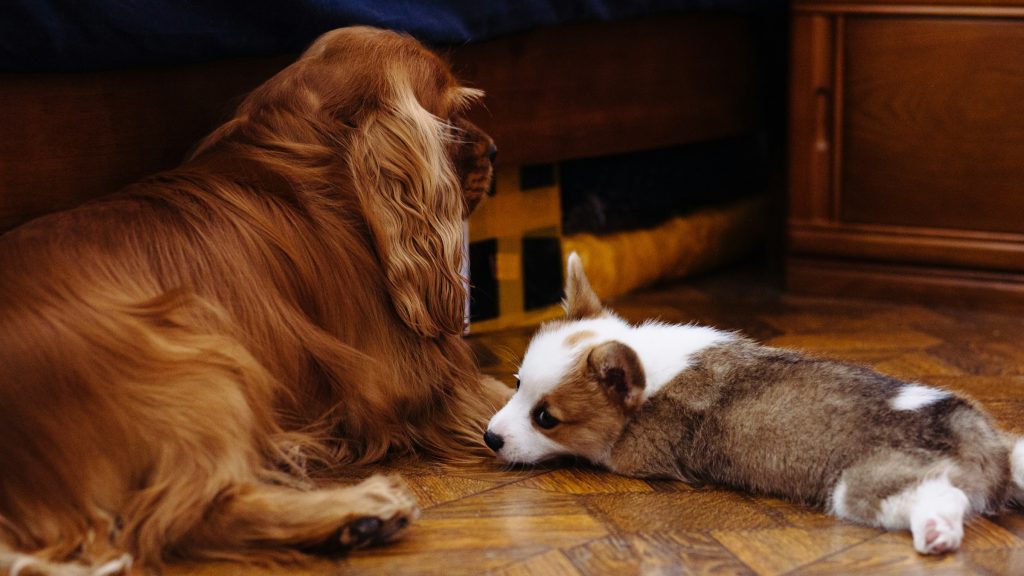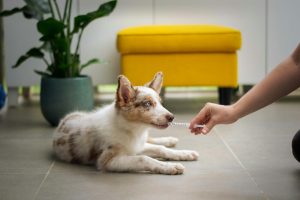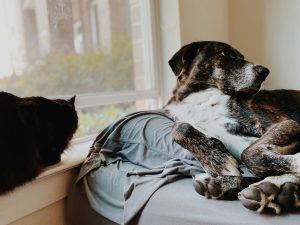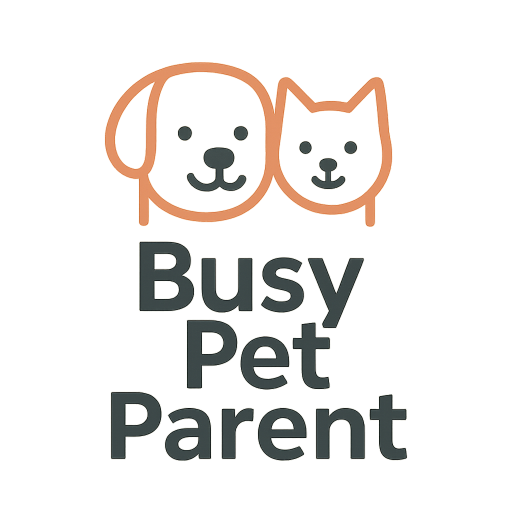
The Ultimate Guide to Dog Training in Apartments: From Puppies to Senior Dogs
Living in an apartment with a dog presents a unique set of challenges and rewards. From mastering potty training in tight quarters to teaching calm behavior around neighbors, every phase of your dog’s life requires a thoughtful approach. This comprehensive guide brings together over 25 essential dog training strategies tailored specifically for apartment dwellers. Whether you’re raising a new puppy or managing the behavior of a senior companion, these techniques are apartment-tested and expert-approved.
You may also enjoy:
- 15 Game-Changing Puppy Training Tips for Apartment Dwellers
- Potty Training Tips for Apartment Dogs
- How to Stop Your Dog From Barking at Random Noises
Dog Training Tips for Apartment Living
1. Start With a Daily Routine
Dogs thrive on consistency, especially in small living environments. A predictable daily schedule helps reduce anxiety and encourages better behavior. Set regular times for feeding, walks, play, and training sessions. This structure reinforces expectations and helps your dog understand when it’s time to be calm versus active.
If your work schedule fluctuates, try to keep at least the walk and meal times consistent. Dogs often feel more secure when their day has a reliable rhythm.
2. Potty Training in Tight Spaces
Teaching your dog where and when to go potty is crucial when living in a small apartment. Use positive reinforcement to reward your dog immediately after they relieve themselves in the correct spot—whether it’s outside on a scheduled walk or on a designated indoor pad for emergencies.
For more detailed guidance, check out our post on potty training tips for apartment dogs.
3. Focus on Quiet Command Training
Living close to neighbors means excessive barking can quickly become a problem. Teach your dog the “quiet” or “enough” cue early on. Use a calm voice and reward them with a treat the moment they stop barking. Avoid yelling, which can sound like barking back.
Training for silence takes time—practice when your dog is calm before applying it in real scenarios.
4. Use Treats Strategically
Positive reinforcement is your most powerful tool. Use treats to reward calm behavior, following commands, or staying on a mat quietly. In an apartment, every moment of peace is worth celebrating—and reinforcing.
Consider keeping a small pouch of treats near the front door, the couch, or the dog bed to reward good choices in real time.
5. Minimize Excess Energy Indoors
A hyper dog in a small space can quickly lead to destructive behavior. Start the day with a brisk walk or a play session to burn off energy. Interactive toys like food puzzles or tug ropes also help channel your dog’s mental and physical energy constructively.
An exercised dog is a calmer dog—and that makes apartment life much smoother for everyone involved.
6. Choose Apartment-Friendly Gear
In tight spaces, the right gear makes training easier. Look for slim-profile treat pouches, hands-free leashes, foldable crates, and quiet toys. If your dog is older, consider ramps or orthopedic mats that support joint health while avoiding bulky furniture.
For ideas, see our guide to helpful pet gear items for senior dogs—many options are perfect for any age in an apartment setting.
7. Address Barking at Noises
Apartment life means your dog hears everything—neighbors, elevators, deliveries. Desensitize them slowly. Play audio of common sounds at a low volume during playtime, increasing gradually. Pair the sound with treats or a command like “focus” to redirect their attention.
For more techniques, visit how to stop your dog from barking at random noises.
8. Teach a “Settle” Cue
A calm dog is essential in shared spaces. Train your dog to relax on a mat or bed using the “settle” command. Use positive reinforcement when they lie down, stay put, and remain quiet—especially when distractions like guests or doorbells are present.
Over time, this cue becomes a powerful way to manage overstimulation in small apartments.
9. Use Scent-Based Enrichment
When outdoor time is limited, use your dog’s nose for enrichment. Scatter treats in a towel, fill a snuffle mat, or hide bits of food around the room. Nose work helps reduce boredom and increases confidence—especially helpful for anxious apartment dogs.
Aim for short scent games daily to create calm satisfaction indoors.
10. Practice Elevator Etiquette
If your building has elevators, train your dog to sit calmly and wait to enter or exit. Reinforce good behavior with praise or treats after a successful ride. If other dogs or people are nearby, use cues like “watch me” to keep their focus.
Elevators can be cramped—practicing calm elevator behavior shows your dog how to navigate tight shared spaces respectfully.
11. Build Positive Associations With Neighbors
Apartment dogs need to feel neutral—or better yet, friendly—toward the people they see frequently. Let your dog observe neighbors from a distance and reward calm behavior. Over time, you can shorten the distance and build confidence.
Never force greetings. Let your dog set the pace to avoid anxiety or reactivity.
12. Crate Train for Short Absences
Proper crate training gives your dog a secure place to rest while you’re away. In an apartment, this minimizes noise, prevents accidents, and keeps your dog safe. Make the crate inviting with soft bedding, a safe toy, and a treat or two before you leave.
Never use the crate as punishment—your dog should view it as a cozy den, not confinement.
13. Prepare for Doorway Distractions
Doorbells, knocks, or hallway chatter can trigger barking or jumping. Use training setups: knock or ring the bell yourself, then reward your dog for staying on their mat. Teaching a “place” command near the door helps redirect excitement into calm.
Practice regularly, even without real guests, to build good door habits.
14. Use a Training Bell by the Door
Bell training gives your dog a polite way to tell you they need to go outside—essential in a home without a backyard. Hang a soft jingle bell on the doorknob and ring it yourself before taking your dog out. Soon, your pup will tap it themselves when nature calls.
Keep it consistent and reward every successful ring to reinforce the cue.
15. Train During Elevator Wait Time
Waiting for an elevator? Use that moment to reinforce calm behaviors like sitting, eye contact, or leash manners. Instead of letting your dog lunge at buttons or other residents, treat it like a training opportunity.
Turn every transition in apartment life into a teachable moment—it adds up quickly.
16. Reinforce Quiet Behavior With a Cue
Living in close quarters means barking needs to be addressed quickly. Instead of yelling “no,” teach your dog a cue like “quiet” using treats. Start by saying the word when they pause naturally, then reward. Eventually, they’ll associate the cue with stopping the noise.
Be patient—this takes time, but it’s one of the most apartment-friendly cues you can teach.
17. Add Clicker Training for Precision
Clicker training is perfect for apartment dogs because it builds clear communication. Click and immediately treat when your dog does something right—like lying quietly or walking nicely on leash. Over time, it increases responsiveness and reduces frustration.
Keep your sessions short (3–5 minutes) and end on a positive note.
18. Reward Calm Window Watching
Dogs love to look out the window, but it can lead to overstimulation. Teach them to lie quietly while watching by offering a chew toy or scatter feeding in their viewing area. If they bark, redirect their focus instead of scolding.
Calm observation reduces anxiety and makes window time enjoyable for everyone.
19. Use Calming Scents and Sounds
Essential oils (like lavender in pet-safe diffusers), white noise machines, or soft music can help reduce your dog’s reactivity. Play these while training or during downtime to build a relaxed environment.
Use consistently, especially during stressful times like construction noise or busy evenings.
20. Keep a Routine for Predictability
Dogs thrive on structure—especially in busy apartment environments. Try to keep meals, walks, and training times as consistent as possible. Predictability builds confidence and reduces stress-based behavior problems.
Consistent routines can also make potty training and barking control far easier to manage.
21. Train Your Dog to Use Stairs Safely
If your apartment has stairs (indoors or in hallways), teach your dog to use them slowly and carefully. Use a leash and treats to reinforce safe pacing—no rushing or pulling. Senior dogs or small breeds may need extra encouragement or assistance.
For dogs with mobility issues, consider ramps or lift harnesses for added safety.
22. Reward Calm Behavior During Deliveries
Delivery people are a common trigger for barking. Keep treats near the door and ask your dog to sit or lie down as the package arrives. Reward their composure and repeat this drill even when no one is delivering, so they associate the doorbell with calm behavior.
Consistency here keeps your neighbors happy and reduces reactivity over time.
23. Use Targeting to Improve Indoor Control
Teach your dog to “touch” your hand or a target object. This is a versatile behavior that builds focus and allows you to redirect attention easily. You can use targeting to guide your dog onto a mat, away from guests, or even through narrow spaces.
It’s also a great confidence builder for shy dogs in busy apartment corridors.
24. Introduce Pet Cameras for Monitoring and Training
Smart pet cameras let you observe your dog’s behavior when you're away—and even offer real-time feedback. Many models allow you to speak, dispense treats, or get alerts if barking starts. Use these tools to reinforce training even when you’re not home.
Monitoring helps spot patterns and fine-tune your training plan.
25. End the Day With a Short Training Ritual
Cap off each day with a 5-minute training session. Reinforce cues like “sit,” “stay,” “place,” or calm leash behavior indoors. This consistent closing routine promotes bonding, reinforces manners, and helps your dog settle before bedtime.
Evening rituals build long-term calmness—and are a peaceful way to wind down together.
Final Thoughts
Living in an apartment doesn’t mean compromising on your dog’s training, wellbeing, or happiness. From basic obedience to advanced focus skills, each of these 25+ training tips was designed with small spaces, close neighbors, and daily apartment realities in mind. Whether you’re welcoming a new puppy, fine-tuning your dog’s behavior, or helping a senior dog feel comfortable with everyday routines, consistency, positive reinforcement, and gentle boundaries go a long way.
Remember, you’re not alone in this journey. Every challenge—from barking to bathroom accidents—is solvable with patience and the right plan. Bookmark this guide, refer to it often, and celebrate every small win along the way. Apartment dogs can be some of the best-behaved, happiest companions out there—with the right training, they’ll thrive alongside you in your shared space.
Frequently Asked Questions
Can you successfully train a dog in an apartment?
Absolutely. With consistency, structure, and rewards-based methods, dogs can be successfully trained in any living space. Apartment training focuses more on controlling barking, managing potty habits, and preventing stress triggers like noise and limited exercise.
How do I prevent barking complaints from neighbors?
Barking can be reduced through desensitization, redirection, and training cues like “quiet.” It also helps to block visual triggers (like covering windows), provide mental stimulation, and avoid scolding. Calm reinforcement is key to long-term success.
What’s the best way to potty train a dog without a backyard?
Use a strict schedule, reward immediately after elimination, and choose consistent potty spots (outdoors or on a balcony/pad). Take them out frequently, especially after eating or napping. For extra tips, check out our Potty Training Guide.
Are large dogs harder to train in small apartments?
Not necessarily. Large dogs can adapt well to apartments if their physical and mental needs are met. Training them to relax indoors, respect boundaries, and wait calmly for walks is key. Space matters less than structure and routine.
Should I use crates or playpens in apartment training?
Yes. Crates provide safety, structure, and help with potty training. Playpens offer freedom while still limiting access. Both can reduce destructive behavior and create a calm home environment when introduced positively.

Join the Busy Pet Parent Newsletter!
Get easy routines, time-saving tips, and the latest gear reviews—delivered straight to your inbox.
Perfect for busy pet owners, apartment dwellers, and anyone who wants a happy, healthy companion (without the stress).
Exclusive guides & checklists
Product recommendations & deals
No spam—unsubscribe anytime!




